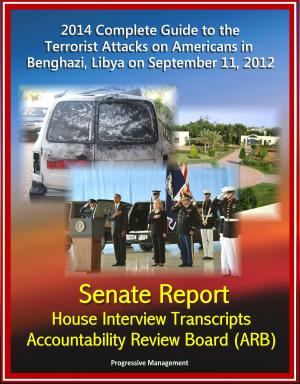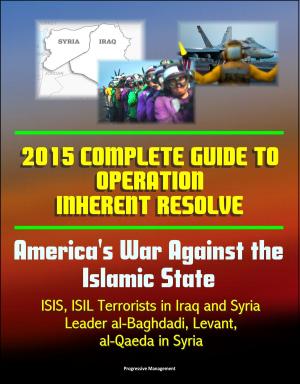History of the Joint Chiefs of Staff: Volume V: The Joint Chiefs of Staff and National Policy 1953-1954 - Air Defense, Manpower, Atoms for Peace, Korea, Indochina, Taiwan, Western Europe
Nonfiction, History, Military, Nuclear Warfare| Author: | Progressive Management | ISBN: | 9781301179190 |
| Publisher: | Progressive Management | Publication: | September 20, 2013 |
| Imprint: | Smashwords Edition | Language: | English |
| Author: | Progressive Management |
| ISBN: | 9781301179190 |
| Publisher: | Progressive Management |
| Publication: | September 20, 2013 |
| Imprint: | Smashwords Edition |
| Language: | English |
Volume V describes JCS activities during the first two years of the Eisenhower administration. It traces the role of the Joint Chiefs of Staff in the formulation of the basic national security policies of those years, in force planning and strategy development, and in the nascent area of arms control. The volume also describes JCS participation in planning and operations in various areas of the world where the United States was involved, with the exception of the Korean War—a subject covered in The joint Chiefs of Staff and National Policy, Volume III, The Korean War.
-
Basic National Security Policy, 1953 * 2. Basic National Security Policy, 1954 * 3. Force Levels and Personnel Strengths * 4. Strategic Planning, 1953-1954 * 5. Continental Air Defense * 6. Mobilization Planning * 7. Manpower Mobilization: Organization of Reserve Forces * 8. Missions and Weapons * 9. Disarmament and Atoms for Peace * 10. Military Assistance * 11. The Far East: Korea * 12. The Far East: Indochina, Taiwan, Japan * 13. Western Europe, 1953 * 14. Western Europe, 1954 * 15. The Middle East * 16. Latin America
-
Basic National Security Policy, 1953 * Policy Issues at the Beginning of 1953 * Early Decisions of the New Administration * A New Statement of National Security Policy: NSC 153/1 * Project Solarium * The New Joint Chiefs of Staff and Their Recommendations * A New Policy Directive: NSC 162/2 * Military Strategy Reexamined: JCS 2101/113 * Differences among the Joint Chiefs of Staff * The New Look and Its Interpretation * 2. Basic National Security Policy, 1954 * Framework of Policy Discussion in 1954 * NSC 162/2 and the FY 1956 Budget * JCS Appraisal of Free World Military Posture * First Budget Guidelines * JCS Views on Negotiations with the Soviets * Interim Policy Revision: NCS 5422/2 * Policy Debate Continued * A Revised National Security Policy: NSC 5501 * The Direction of Policy in 1954 * 3. Force Levels and Personnel Strengths * FY 1954 Goals under the Eisenhower Administration * The JCS Interim Look for FY 1955 * The FY 1955 Budget: Impact of the New Look * FY 1956 Plans and the Indochina Crisis * The Issue of Support Force Recommendations * The Decision to Accelerate Retrenchment * Force Levels under the New Ceilings * FY 1956 Defense Budget * Force Levels and Strategy, 1953-1954 * 4. Strategic Planning, 1953-1954 * The JCS Planning Program: Policy Memorandum 84 * Planning at the Beginning of 1953 * Progress of the Joint Strategic Capabilities Plan * Development of the Joint Strategic Objectives Plan * The Joint Long-Range Strategic Estimate * The Planning Program Reconsidered * The First Joint Strategic Capabilities Plan Completed * The Joint Mid-Range War Plan * The 1955-1956 Joint Strategic Capabilities Plan * Revision of the Planning Program * The JCS Planning Program: The First Two Years * 5. Continental Air Defense * Plans, Organization, and Forces for Air Defense * Legacy of the Truman Administration * The New Administration Confronts a Dilemma * Service and Continental US Defense Planning Group Proposals * A New Policy for Continental Defense: NSC 159/4 * Continental Defense and the FY 1955 Budget * Canada's Role in the Early Warning System * A Second Look at Continental Defense Plans * Command and Organizational Changes * The Net Capabilities Evaluation Subcommittee * Northern Canada (Distant Early Warning) Line * Objectives for FY 1956 * Continental Defense at the End of 1954 * 6. Mobilization Planning * Allocation of Responsibilities * The Eisenhower Administration and the Mobilization Base in 1953 * The Joint Chiefs of Staff and Stockpile Policy * The Role of the Office of Defense Mobilization Mobilization * Planning as an Issue in 1954 * Mobilization Policy at the End of 1954 * Service Approaches to Mobilization: The Joint Mid-Range War Plan * Mobilization Planning and the New Look * 7. Manpower Mobilization: Organization of Reserve Forces * Manpower Policy as a Problem
Volume V describes JCS activities during the first two years of the Eisenhower administration. It traces the role of the Joint Chiefs of Staff in the formulation of the basic national security policies of those years, in force planning and strategy development, and in the nascent area of arms control. The volume also describes JCS participation in planning and operations in various areas of the world where the United States was involved, with the exception of the Korean War—a subject covered in The joint Chiefs of Staff and National Policy, Volume III, The Korean War.
-
Basic National Security Policy, 1953 * 2. Basic National Security Policy, 1954 * 3. Force Levels and Personnel Strengths * 4. Strategic Planning, 1953-1954 * 5. Continental Air Defense * 6. Mobilization Planning * 7. Manpower Mobilization: Organization of Reserve Forces * 8. Missions and Weapons * 9. Disarmament and Atoms for Peace * 10. Military Assistance * 11. The Far East: Korea * 12. The Far East: Indochina, Taiwan, Japan * 13. Western Europe, 1953 * 14. Western Europe, 1954 * 15. The Middle East * 16. Latin America
-
Basic National Security Policy, 1953 * Policy Issues at the Beginning of 1953 * Early Decisions of the New Administration * A New Statement of National Security Policy: NSC 153/1 * Project Solarium * The New Joint Chiefs of Staff and Their Recommendations * A New Policy Directive: NSC 162/2 * Military Strategy Reexamined: JCS 2101/113 * Differences among the Joint Chiefs of Staff * The New Look and Its Interpretation * 2. Basic National Security Policy, 1954 * Framework of Policy Discussion in 1954 * NSC 162/2 and the FY 1956 Budget * JCS Appraisal of Free World Military Posture * First Budget Guidelines * JCS Views on Negotiations with the Soviets * Interim Policy Revision: NCS 5422/2 * Policy Debate Continued * A Revised National Security Policy: NSC 5501 * The Direction of Policy in 1954 * 3. Force Levels and Personnel Strengths * FY 1954 Goals under the Eisenhower Administration * The JCS Interim Look for FY 1955 * The FY 1955 Budget: Impact of the New Look * FY 1956 Plans and the Indochina Crisis * The Issue of Support Force Recommendations * The Decision to Accelerate Retrenchment * Force Levels under the New Ceilings * FY 1956 Defense Budget * Force Levels and Strategy, 1953-1954 * 4. Strategic Planning, 1953-1954 * The JCS Planning Program: Policy Memorandum 84 * Planning at the Beginning of 1953 * Progress of the Joint Strategic Capabilities Plan * Development of the Joint Strategic Objectives Plan * The Joint Long-Range Strategic Estimate * The Planning Program Reconsidered * The First Joint Strategic Capabilities Plan Completed * The Joint Mid-Range War Plan * The 1955-1956 Joint Strategic Capabilities Plan * Revision of the Planning Program * The JCS Planning Program: The First Two Years * 5. Continental Air Defense * Plans, Organization, and Forces for Air Defense * Legacy of the Truman Administration * The New Administration Confronts a Dilemma * Service and Continental US Defense Planning Group Proposals * A New Policy for Continental Defense: NSC 159/4 * Continental Defense and the FY 1955 Budget * Canada's Role in the Early Warning System * A Second Look at Continental Defense Plans * Command and Organizational Changes * The Net Capabilities Evaluation Subcommittee * Northern Canada (Distant Early Warning) Line * Objectives for FY 1956 * Continental Defense at the End of 1954 * 6. Mobilization Planning * Allocation of Responsibilities * The Eisenhower Administration and the Mobilization Base in 1953 * The Joint Chiefs of Staff and Stockpile Policy * The Role of the Office of Defense Mobilization Mobilization * Planning as an Issue in 1954 * Mobilization Policy at the End of 1954 * Service Approaches to Mobilization: The Joint Mid-Range War Plan * Mobilization Planning and the New Look * 7. Manpower Mobilization: Organization of Reserve Forces * Manpower Policy as a Problem















